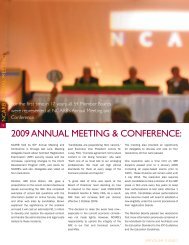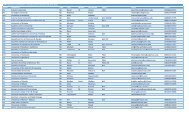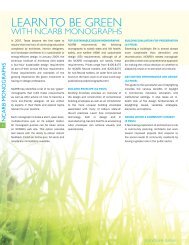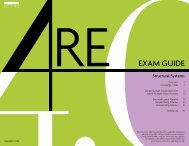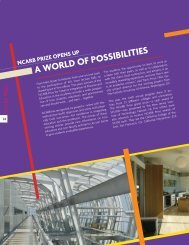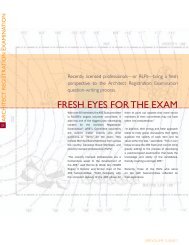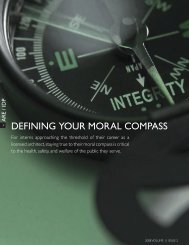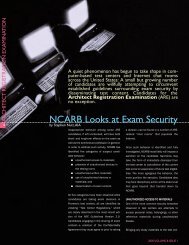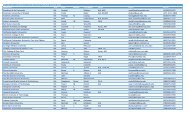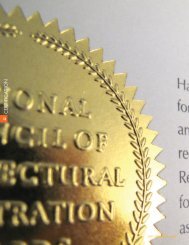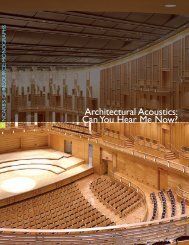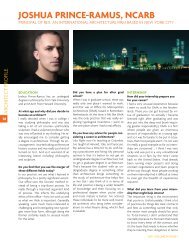Model Brief to Enforce Laws Prohibiting Architectural ... - NCARB
Model Brief to Enforce Laws Prohibiting Architectural ... - NCARB
Model Brief to Enforce Laws Prohibiting Architectural ... - NCARB
You also want an ePaper? Increase the reach of your titles
YUMPU automatically turns print PDFs into web optimized ePapers that Google loves.
<strong>Model</strong> <strong>Brief</strong><br />
affect public rights or privileges or endanger public health, regardless of whether<br />
such acts are denounced as crimes”); Kentucky State Board of Dental Examiners v.<br />
Payne, 213 Ky. 382, 281 S.W.188 (1926) (upholding injunction against unlicensed<br />
practice of dentistry, even though criminal sanctions were also available); State ex<br />
rel. La Prade v. Smith, 43 Ariz. 131, 29 P.2d 718 (1934) (authorizing injunction<br />
against unlicensed practice of medicine, even though criminal sanctions were also<br />
available); Ritholz v. Ark. State Board of Op<strong>to</strong>metry, 206 Ark. 671, 177 S.W.2d 410,<br />
411-12 (1944) (upholding injunction against unlicensed practice of op<strong>to</strong>metry,<br />
even though criminal sanctions were also available).<br />
The rationale underlying these cases is that the “basic purpose [of professional<br />
licensing statutes is] not <strong>to</strong> create a crime, but <strong>to</strong> safeguard the health and welfare<br />
of the public by protecting, in a measure at least, [the public] from the consequences<br />
of incompetency and inefficiency in the profession.” Holcomb, 138 S.E.2d<br />
at 709; accord Ritholz, 177 S.W.2d at 411 (“[t]he action is not one <strong>to</strong> enjoin the<br />
commission of a crime, as such. Its purpose, primarily, is <strong>to</strong> prevent illegal practice<br />
of op<strong>to</strong>metry, rather than <strong>to</strong> penalize the practitioner”); People ex rel. Oakland<br />
County Prosecuting At<strong>to</strong>rney v. Kevorkian, 210 Mich. App. 601, 534 N.W.2d 172,<br />
175 (1995) (“Harm <strong>to</strong> the public is presumed <strong>to</strong> flow from the violation of a valid<br />
statute enacted <strong>to</strong> preserve public health, safety and welfare….The existence of a<br />
criminal or other penalty for the practice of a profession without a license will not<br />
oust equity from jurisdiction”). Any contrary rule would be harsh, indeed, since it<br />
would expose the public <strong>to</strong> health and safety risks pending the conclusion of oftenprotracted<br />
criminal proceedings. Accordingly, there is no adequate remedy at law<br />
and the availability of criminal sanctions does not divest this Court of its equitable<br />
powers.<br />
D. The public interest justifies an injunction.<br />
As set forth above, public health and safety concerns are at the heart of architectural<br />
registration statutes. Because the Legislature has recognized that unlicensed practitioners<br />
endanger the public’s health and safety, the public interest clearly favors<br />
entry of injunctive relief.<br />
CONCLUSION<br />
For all of the foregoing reasons, the Board respectfully requests that a preliminary<br />
injunction issue <strong>to</strong> prevent the defendant from engaging in the practice of architecture<br />
in this state or using the title “architect” or any name or title or any words,<br />
letters, figures, sign, card, advertisement, symbol, or device indicating or tending<br />
<strong>to</strong> indicate that the defendant is an architect or is practicing architecture, and, in<br />
particular, from [insert particular description of illegal activity <strong>to</strong> be enjoined].<br />
8



